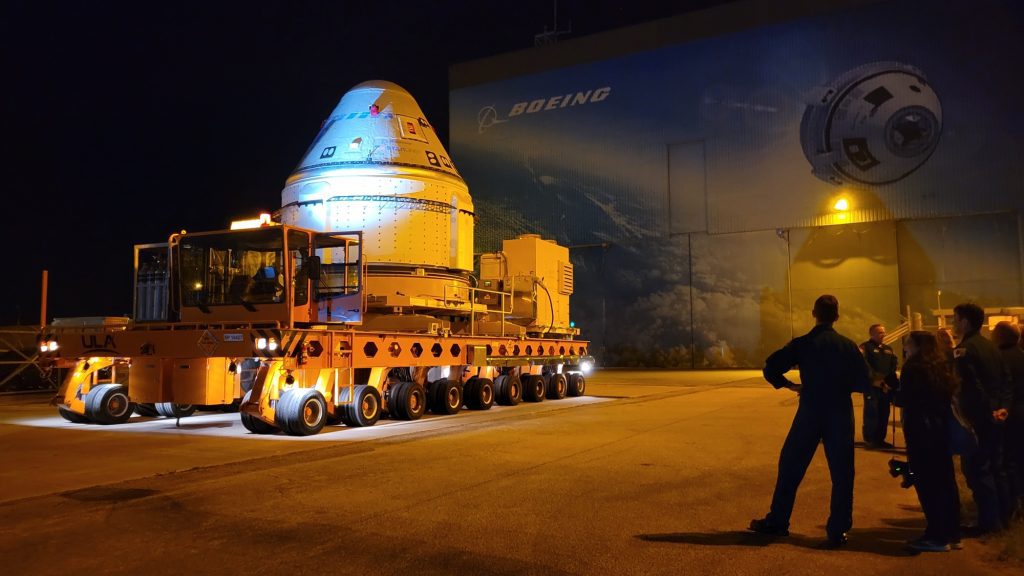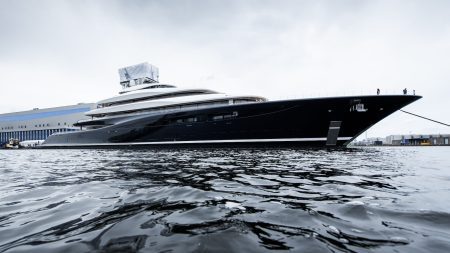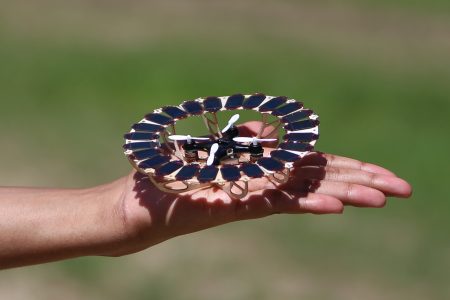Boeing’s CST-100 Starliner is now positioned on the Atlas 5 rocket that will send the spacecraft on a crewed trial flight to the International Space Station next month.
The spacecraft moved from Boeing’s Commercial Crew and Cargo Processing Facility at the Kennedy Space Center to Space Launch Complex 41 on April 16. The spacecraft was lifted into position on top of the Atlas 5 rocket in the Vertical Integration Facility building later that day.
The transfer is the latest step in getting ready for the Crew Flight Test (CFT) mission, which is scheduled to launch no earlier than the evening of May 6. NASA astronauts Butch Wilmore and Suni Williams will be on board, flying Starliner to the International Space Station. They will stay on the station for about eight days before returning to Earth, landing in the southwestern United States.
The launch was originally planned for May 1 but was postponed due to activities at the ISS, including changed schedules for the departure of a cargo Dragon vehicle and the relocation of the Crew Dragon spacecraft to free up the forward docking port on the Harmony module for Starliner.
The CFT mission will take place almost exactly two years since a second uncrewed test flight, known as OFT-2, that successfully docked to the station and returned to Earth. The original uncrewed test flight, in December 2019, experienced malfunctions that prevented the spacecraft from reaching the station and forced it to return to Earth after only a couple days.
During a briefing on March 22, Mark Nappi, vice president and program manager for Starliner at Boeing, stated that the main goal of CFT is to evaluate how spacecraft systems work with a crew on board. “We flew OFT-2, and that was the uncrewed mission for the Starliner vehicle, and it was very successful. Now we introduce humans.”
Most of the flight test objectives, he said, are dedicated to answering “does the vehicle perform with the human in the loop as expected?” This includes various environmental systems, control interfaces, and the astronauts’ ability to take manual control of the spacecraft if needed.
A successful CFT would allow NASA to finish certification of Starliner for regular crew rotation missions, beginning with Starliner-1 in early 2025. At the March briefing, Steve Stich, NASA commercial crew program manager, mentioned that certification needed to be completed by November of December to keep Starliner-1 on schedule. “I think we have a good shot” of achieving that schedule, he said then. “We just need to stay on track.”
The next milestone for the CFT mission is a flight test readiness review, scheduled for April 25. Wilmore and Williams are also scheduled to arrive at KSC the same day for final preparations for the mission.









